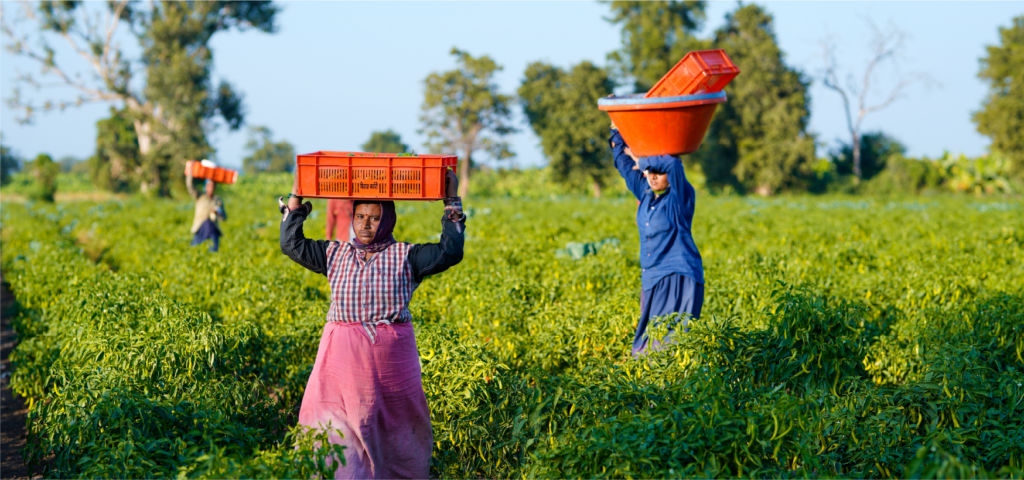Paying people for actions that contribute to climate change mitigation, known as payment for ecosystem services (PES), has the potential to address both environmental and poverty alleviation goals. For example, there is a strong history of PES programs to reverse and slow deforestation in communities in the Global South. Emerging evidence of PES in the agricultural context also shows incentivizing smallholder farmers monetarily can be effective in encouraging behavior change for climate change mitigation.

One way to finance PES programs gaining increasing interest from both the public and private sector is the voluntary carbon market, expected to be worth $50 billion by 2030. Connecting farmers to the amount of climate financing potentially available in the voluntary carbon credit market may help facilitate a sustainable agriculture transformation. However, a key variable still poorly understood is what the value of carbon credit prices should be to appropriately compensate farmers while also achieving carbon removal goals. The low and volatile prices of current nature-based carbon sequestration projects, ranging from $5–$15/ton of carbon from 2021 to 2022, can exacerbate the equity challenges PES programs face, especially in smallholder farmer contexts where ensuring procedural fairness and safeguarding the rights of smallholder farmer communities are critical.
There is currently little transparency into how prices for voluntary carbon market projects are determined, as well as the percentage farmers ultimately receive. As there is no standard system for carbon credit pricing, most pricing is determined between individual buyers and the specific project developer. If the buyer is a corporation that has set an internal carbon price, then there can be a degree of transparency in the price that the buyer is willing to offer for carbon credit projects. However, as the World Bank stated in a report on carbon pricing:
The market for credits from independent crediting mechanisms is heterogeneous, with buyers placing a range of values on characteristics such as the sector (e.g., type of activity), geography, age/vintage, and co-benefits of credits. While recent years have seen some moves toward offering standardized contracts…prices vary widely, with trading platforms offering contracts representing credits from different sectors.
There are also few voluntary carbon market projects available right now which involve smallholder farmers, which makes assessing the true price potential of these types of projects difficult.
Yet, the market is developing rapidly and the long-term vision for the sector will be to ensure standard processes (i.e. contracts, measurement, reporting, and verification (MRV) of climate change mitigation outcomes, etc) exist so buyers are certain of the carbon removals they are purchasing and the supply of carbon credit projects consists primarily of those for which carbon removals can be verified. The combination of the two will help ensure higher voluntary carbon credit credits in the future and any smallholder farming communities involved are appropriately compensated. A Bloomberg report estimates in a scenario where only verified carbon removals are allowed in the carbon market supply, “prices shoot up to $224/ton” by 2029.
There is another side to having prices this high, as the same report states that under this high price scenario, carbon credits may be seen as too expensive and be regarded as a “niche, luxury product” that few buyers can afford. However, while we may not want to be in a world where carbon credit prices are in the hundreds of dollars, it is clear there are fixable market failures in the current voluntary carbon market – information costs and transaction costs – which prevent smallholder farmers from getting full value for emissions reductions.
The Science Based Targets Initiative and the Voluntary Carbon Markets Integrity Initiative are examples of organizations working to advance rigor, transparency, and standardization in the voluntary carbon credit market. Higher and more stable prices will strengthen the power of the voluntary carbon credit market to provide equitable payments for ecosystem services programs for smallholder farmer behavior change.
Achieving such prices will require investment in the standard market process mentioned above which will improve the credibility and verifiability of carbon credit projects as well as make the voluntary carbon market a realistic pathway for smallholder farmers to increase their incomes by participating in carbon removals.
PxD published an analysis of the opportunities for smallholder farmers to drawdown of carbon which discusses both the evidence for such strategies (including conservation agriculture practices, agroforestry, and biochar) and the barriers to widespread implementation. We aim to leverage our scale – PxD services reached over seven million farmers in nine geographies last year – to continue to explore ways for farmers to engage in voluntary carbon credit markets and push for market developments which facilitate their participation. We welcome connections with organizations and funders who are also interested in such work so we may work together to improve both livelihoods and protect our planet.

Stay Updated with Our Newsletter

Make an Impact Today


